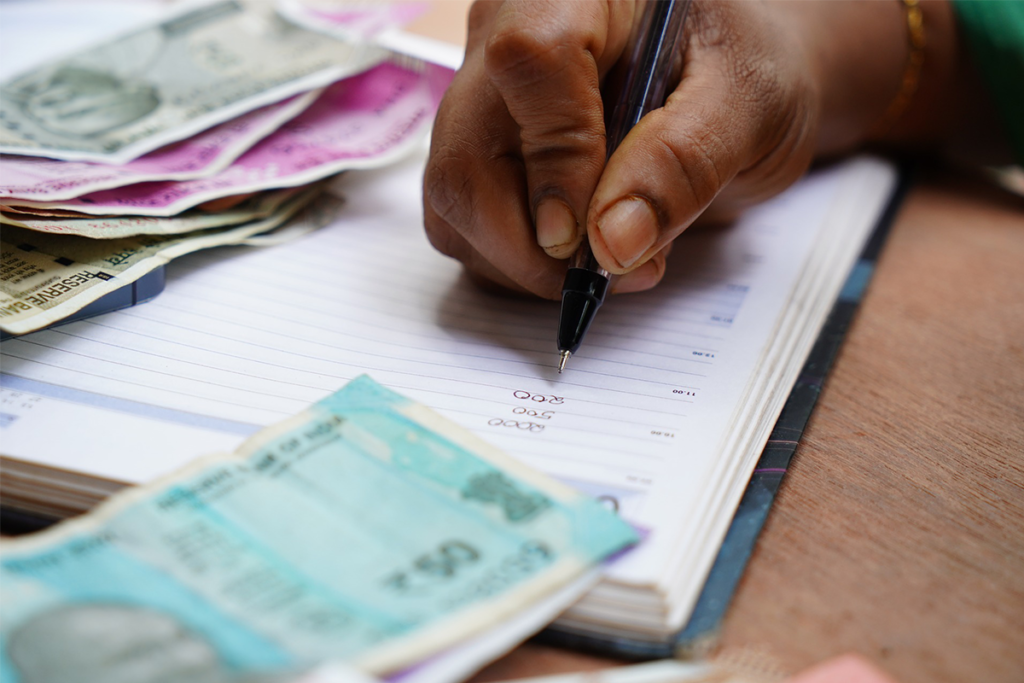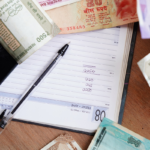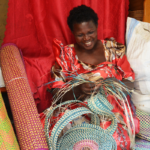In a typical week, Patience visits 10 homes. Through rain or shine, she walks, rides her bike or takes a minibus between 1 and 20 kilometers to get to each house. When she arrives, she is greeted by her study participant and, as they do every week, they find a quiet place to talk. One by one, Patience asks the participant to tell her about all her financial transactions for the week. Often participants only have routine transactions such as food purchased for the family or income from a microbusiness. Some weeks participants have unexpected expenses like materials for a home repair. Occasionally they tell her about savings that they have put aside for large expenses in the future. Patience records all of this information as part of a financial diaries study. In this post, we explain what financial diaries are, how FHI 360 has used them in recent studies and what we’ve learned from using them.
What are financial diaries and why are they a useful methodology?
Financial diaries work like this: participants are guided to record or remember all of their transactions throughout the week. At the end of the week, they have a face-to-face interview with a data collector like Patience who discusses and records details about each transaction such as the value, whether it was an inflow or outflow, the item or service that was bought or sold, where and with whom the transaction took place, and if it had a household, business or mixed purpose. Over time these weekly sessions yield a robust dataset that provides a unique window into participants’ financial lives. Aggregating data across a study sample, we identify trends that can inform programming to meet the unique needs of that population.
How has FHI 360 used and enhanced financial diaries?
FHI 360 has used the financial diaries methodology in three recent studies. Under the USAID-funded Accelerating Strategies for Practical Innovation and Research in Economic Strengthening (ASPIRES) project, in Abidjan, Cote d’Ivoire, Namey, Perry and colleagues (2018) asked 33 female sex workers to keep financial diaries for six weeks to inform economic strengthening interventions that could reduce HIV risk in this population. Namey, O’Regan and Lorenzetti (2019) subsequently undertook a similar six-week formative study with 35 female sex workers in Addis Ababa, Ethiopia under the USAID-MULU HIV Services for Key and Priority Population project.
Through another research activity under the ASPIRES project, Lorenzetti, Swann and O’Regan (2019) worked with 241 HIV-positive pregnant women and new mothers across three sites in Zomba, Malawi to keep financial diaries over a six-month period to understand financial patterns related to their adherence to prevention of mother-to-child transmission (PMTCT) care and treatment.
We also adapted a standard paper-based financial diary debriefing tool into a tablet-based format with embedded responses, consistency checks and automatic data uploads. This modification saved time in the field and considerably reduced the data cleaning burden. The automatic uploads eliminated the need for a separate data entry process and allowed for us to make real-time checks to ensure we collected data in a timely manner for each participant. At the end of each of these studies we also gave participants a digestible paper pamphlet summarizing their financial behaviors, which provided a tangible output from participation.
What have we learned about financial diaries?
Through these three studies, we learned a lot about the methodology itself. First, we found that financial diaries are feasible and useful for both short- and long-term studies. Formative studies, such as those done in Cote d’Ivoire and Ethiopia, provided important insights within just a few weeks to inform potential programming needs for female sex workers. The longer-term study in Malawi illuminated how financial behavior changed over the course of PMTCT care, from early pregnancy through almost two years postpartum, to make recommendations for integrated interventions for this population.
We also confirmed that participants with low literacy and numeracy are able to keep financial diaries. In Malawi, we found that some women with low literacy skills diligently remembered their transactions while others relied on children or other household members to record diary entries. We found both approaches to be effective at engaging these participants in the study. In Cote d’Ivoire, some women employed these same strategies, while others had a pre-existing system of symbols and tally marks they used to keep track of informal loans among peers.
Additionally, we learned that participants tend to like the methodology! Having the same data collector interview participants each week builds rapport and camaraderie. So, despite the substantial time commitment required to be continuously aware of transactions and to be available for weekly interviews, women in our studies anecdotally described how the weekly interactions made them feel valued and important. Many found the activity useful to their own lives, to understand where their money went every week. Female sex workers in Cote d’Ivoire and Ethiopia appreciated that the topic was a departure from their usual discussions with study teams and NGOs about HIV risk. Participants’ interest in this approach is supported by very high retention rates seen across all three studies.
But of course, there are a few drawbacks to the methodology worth considering as well. To start, financial diaries are time and resource intensive for the research team, too. Depending on things like distance, traffic, road conditions and participant availability, we found that a single data collector could work with between 10 and 20 participants per week. Therefore, for larger studies, a bigger, more geographically dispersed data collection team may be necessary, bringing with it data quality issues such as reduced consistency among data collectors and a loss of data reliability. Weekly home-based interviews may also result in high travel costs and the need for careful coordination. For example, in Malawi, after the study was underway, we had to provide each data collector with a bicycle so that they could cover the long distances to meet with participants each week.
This methodology also relies on participants to self-report a lot of detailed data, which may result in recall bias. And there may be a tendency to over- or under-report certain transactions according to social desirability (e.g., money spent on alcohol or cigarettes may be under-reported) or the perceived use of data. For example, we observed a tendency among some participants to under-report income in hopes that they would be eligible for a follow-on program. There is also a risk that increased awareness of financial transactions from keeping the diary could change how participants think about money or even alter their financial behaviors, which could skew findings (more on that in an upcoming post). These types of data quality challenges can be mitigated with strong central monitoring and mentoring of data collectors; providing participants with a clear explanation of the study; building in time for both the participants and the data collectors to get used to the methodology; and encouraging the data collectors to build a rapport and a trusting relationship with their participants.
Finally, this methodology yields a LOT of data – sometimes more than you know what to do with. To capitalize on the exploratory nature of the method, make sure you allocate sufficient time to analyze and make sense of the rich dataset you will generate in order to identify the most interesting patterns within your study population.
In our second post, we will draw on examples from our three studies to discuss how financial diaries can be used to benefit vulnerable populations and provide key takeaways from our financial diaries experience.
This post was produced under United States Agency for International Development (USAID) Cooperative Agreement No. AID-OAA-LA-13-00001 and was made possible by the generous support of the American people through USAID and the United States President’s Emergency Plan for AIDS Relief. The contents are the responsibility of FHI 360 and do not necessarily reflect the views of USAID or the United States Government.
Photo credit: shameersrk/pixabay



